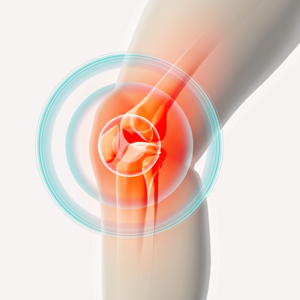Understanding and Treating Bursitis
 Bursitis is a condition characterized by inflammation of a bursa, a fluid-filled sac that cushions joints and muscles. When a bursa becomes irritated or inflamed, it can cause pain, swelling, and limited range of motion. This condition can significantly impact daily activities and quality of life, especially when it affects major joints such as the shoulder, hip, or knee.
Bursitis is a condition characterized by inflammation of a bursa, a fluid-filled sac that cushions joints and muscles. When a bursa becomes irritated or inflamed, it can cause pain, swelling, and limited range of motion. This condition can significantly impact daily activities and quality of life, especially when it affects major joints such as the shoulder, hip, or knee.
Comprehensive Care at Core Health Care
At Core Health Care, we offer effective treatments for bursitis. Our experienced team provides a range of therapies designed to reduce inflammation, improve joint function, and restore normal range of motion.
Physiotherapy
Our physiotherapy treatments incorporate targeted exercises, manual therapy, and education to reduce inflammation, improve joint function, and restore normal range of motion. We’ll work with you to develop a personalized exercise program that strengthens the muscles around the affected joint and improves flexibility.
Chiropractic Care
Chiropractic adjustments can help address any underlying spinal misalignments that may contribute to bursitis. By ensuring proper alignment of the spine and surrounding joints, we can help alleviate stress on the affected bursa and promote healing.
Massage Therapy
Our massage therapy services provide relaxation, pain relief, and improved circulation. This can be particularly beneficial in reducing muscle tension around the affected joint and promoting faster healing of the inflamed bursa.
Your Path to Pain-Free Movement
Contact Core Health Care today to schedule your consultation. Our team of experts will work with you to develop a tailored treatment plan that addresses your specific needs and goals. Take the first step towards recovery and rediscover the joy of pain-free movement.
CONTACT US
Frequently Asked Questions
- Overuse: Repetitive activities that put stress on a joint can irritate the bursa.
- Trauma: A sudden injury, such as a fall or a direct blow to the joint, can cause bursitis.
- Underlying conditions: Conditions such as arthritis or gout can increase the risk of bursitis.
What are the symptoms of bursitis?
- Pain in the affected joint
- Swelling and tenderness
- Limited range of motion
- Difficulty moving the joint
- Warmth or redness in the affected area
What are the treatment options for bursitis?
- Rest and activity modification to allow the inflamed bursa to heal
- Ice or heat therapy to reduce pain and inflammation
- Physiotherapy, chiropractic care, and massage therapy to improve joint function and reduce pain
- Non-steroidal anti-inflammatory drugs (NSAIDs) to manage pain and inflammation
- In severe cases, corticosteroid injections may be recommended

